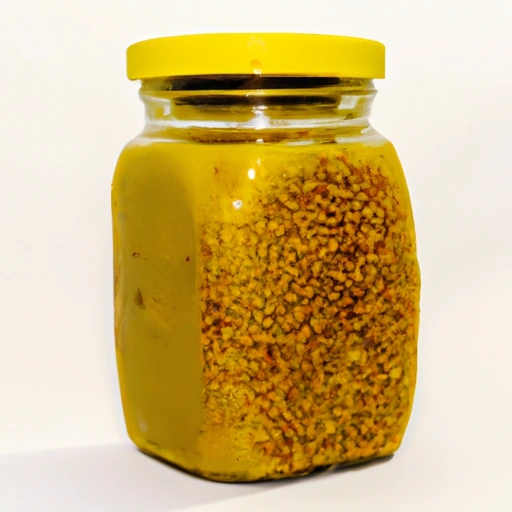Yellow Mustard
Description

Yellow mustard, a common condiment and flavoring agent, is a staple in many kitchens around the world. It is made from the seeds of the mustard plant, which are mixed with vinegar, water, turmeric, and other spices to create a tangy, flavorful paste. Its bright yellow color is typically from the addition of turmeric. Yellow mustard is used in both its seed, ground, and prepared forms, offering a range of flavors from mild to spicy.
Common uses
Yellow mustard is often used as a spread for sandwiches, a dip for finger foods, a glaze for meats, and a base for dressings and sauces. It also adds a tangy kick to marinades and is a key ingredient in many salad dressings, such as honey mustard.
Nutritional value
Calories
A typical serving of yellow mustard, about 1 teaspoon (5 ml or about 5 grams), contains approximately 3 calories.
Protein
Yellow mustard contains about 0.2 grams of protein per serving.
Fat
It is low in fat, with less than 0.2 grams per serving.
Carbohydrates
Yellow mustard has about 0.5 grams of carbohydrates per serving.
Vitamins
It provides small amounts of vitamins, such as Vitamin C and some B vitamins.
Minerals
Yellow mustard contains trace amounts of minerals, including calcium, potassium, and phosphorus.
Health benefits
Yellow mustard not only adds flavor to dishes but also contains compounds that may have anti-inflammatory properties and can aid in digestion. The turmeric used for coloring has curcumin, which is known for its antioxidant effects.
Potential risks
For some individuals, mustard may cause allergic reactions. It is also high in sodium, which should be consumed in moderation by individuals with high blood pressure considerations.
Common recipes
Yellow mustard is a key ingredient in classic American hot dogs, burgers, and potato salad. It's also used in various salad dressings, deviled eggs, and in marinades for proteins like chicken and pork.
Cooking methods
It is typically used raw and added to recipes for flavor. Cooking with yellow mustard can subtly change its flavor profile, making it milder.
Pairing with other ingredients
Yellow mustard pairs well with meats, cheeses, and vegetables. It complements sweet flavors like honey and is offset well by the tanginess of vinegar in dressings.
Summary
Yellow mustard is a versatile ingredient that enhances the taste of numerous dishes with its tangy flavor. It is low in calories and fat, making it a health-conscious choice for adding flavor to food. Its historical roots and widespread popularity make it a global favorite in the culinary world.